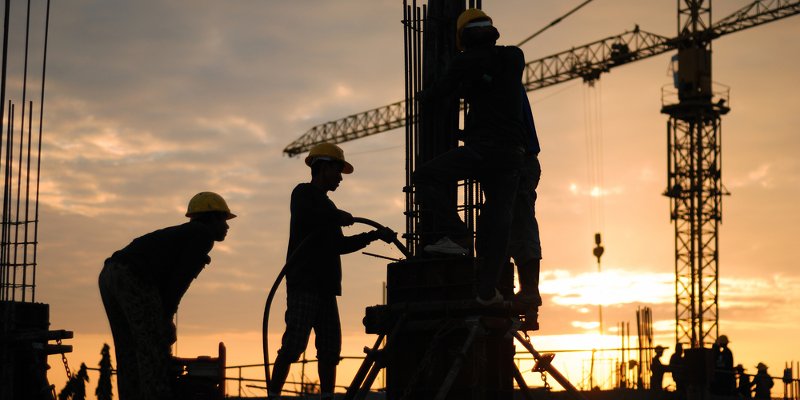The data shows that this is the sixth consecutive month of growth, but the smallest monthly increase in that time.

Construction output saw a monthly increase of 1% in October, according to the Office for National Statistics (ONS).
This is due to increases in both new workup (+0.3%) and repair and maintenance (+2.3%).
The data shows that this is the sixth consecutive month of growth, but the smallest monthly increase in that time.
Construction output grew by 24.9% in the three months to October 2020 compared with the previous three month period.
This is as a result of a 23.8% rise in new work, and a 26.8% uptick in repair and maintenance over the same timeframe.
Furthermore, the level of construction output in October 2020 was 6.4% below February 2020, with only infrastructure having recovered above this pre-lockdown level of output.
The research also detailed that new private housing construction work rose by 145% since the first lockdown.
However, new private housing construction activity dipped 1.9% on a monthly basis.
Andy Sommerville, director at Search Acumen, said: “This latest data shows an uplift in construction output from the troughs of lockdown, driven in part by rampant buyer activity in the housing market and improving confidence levels among housebuilders.
“The higher stamp duty threshold has increased demand for properties, triggered by buyers rushing to lock in the financial benefits on offer.
“Historically low mortgage rates and changing consumer preferences toward larger properties with access to green space are further injecting stimulus in the buyer side of the market.
“As a result, housebuilders may have rapidly scaled up supply to capitalise on elevated levels of demand.
“The distribution of an effective coronavirus vaccine is improving the prospects of economic activity returning to normal soon.
“This is partially offsetting fears that unemployment may rise sharply in 2021 once government support schemes are wound down, which will help maintain demand in the property market.
“A better outlook for next year is likely to prompt housebuilders to continue with building projects.
“Digital innovation has been vital to keep the property market functioning for buyers and sellers during the pandemic.
“However, these innovations now need to be adopted by housebuilders to ensure supply can better meet the surge in demand.
“Improving data consumption and adoption of digital practices will help housebuilders make efficiency gains and reduce the cost of supplying new housing.”
Gareth Belsham, director of Naismiths, added: “Construction may have surrendered its crown as the fastest-growing sector of the economy, but it is still making solid progress.
“After six straight months of expansion, in October it was once again a £13bn industry.
“Yet the rate of growth is slowing badly. Output jumped by a quarter in the three months to the end of October, an impressive feat but well off the pace of the breakneck 41.7% growth recorded in the third quarter of the year.
“The government’s greenlighting of a series of infrastructure projects has propelled infrastructure output past its pre-COVID levels.
“In all other subsectors of the industry the fightback for pre-pandemic parity continues.
"Despite the breathtaking 145% growth recorded by private sector housebuilders since April, their output in October was still £46m lower than it was in February.
“As the wider economy stalled in October, private sector housebuilders also saw output slip into reverse, with a 1.9% month-on-month fall. Despite this setback, confidence is strong and order books for 2021 are impressively full.
“But October’s wobble shows the recovery is far from complete and remains fragile. With UK builders heavily reliant on materials imported from the EU, the lack of progress in Britain’s trade negotiations with the European bloc is also a major worry.
“There’s now a very real prospect that from 1stJanuary, trade barriers will add cost and delays to the imports of certain crucial building materials.
“The construction industry has seen the most white-knuckle fall and recovery of any sector during 2020, but it ends the year busy and optimistic – albeit with a recovery that is incomplete and far from irreversible.”



